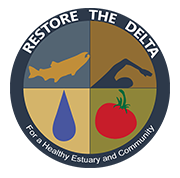It has been clear all along that tinkering with the Delta would not by itself get exporters the volume of water they want with the predictability they want. They’re looking for ways to increase storage north of the Delta, and that includes getting the Bureau of Reclamation to raise Shasta Dam by 18.5 feet.
A plan being considered under the Shasta Lake Water Resources Investigation Draft Feasibility Report would submerge the historic and present-day cultural and ceremonial land of the Winnemem Wintu people, a loss that cannot be mitigated. Furthermore, the plan doesn’t meet its objective to increase anadromous fish survival while also increasing water supply reliability. Raising the height of Shasta Dam would destroy more salmon and trout spawning habitat and make construction of a viable fish-way for salmon less feasible.
The project will drown thousands of acres of National Forest land managed for recreation and wildlife, and permanently destroy habitat for dozens of protected wildlife and plant species. It will also modify flows downstream in the lower Sacramento River, with potentially significant impacts on the river’s riparian ecosystem and its wildlife.
Here’s what it means for the Sacramento-San Joaquin Delta: Reducing fresh water flows into the Delta will increase reverse flows in Old and Middle Rivers and thereby increase the mortality of the Delta’s native but endangered fish. The plan is not proposing any mitigation.
It isn’t even clear that the watershed is large enough to refill the proposed 634,000 acre feet of Shasta reservoir storage when it is needed in dry years.
This project will be funded primarily with public money, although the main beneficiary is Westlands Water District, which has junior rights to agricultural water under the federal Central Valley Plan (CVP) and wants more water to keep irrigating selenium-tainted farmland on the west side of the San Joaquin Valley.

